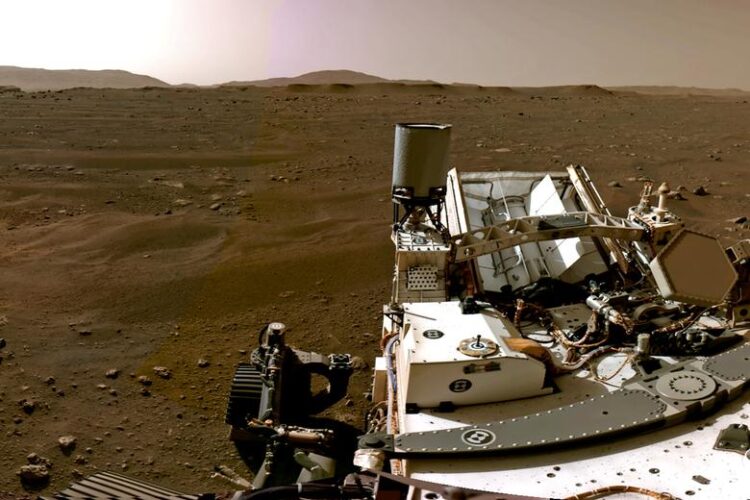By Isabelle Wilson-
NASA has produced the first sounds of tonado in Mars in the form of a towering whirlwind of dust passing right over the Perseverance rover, as it explored the site of an ancient lake on Mars .
The rover recorded the first sounds of this Martian dust devil using its microphone.
The first ever sound recording of tiny tornadoes on Mars called dust devils has been made by scientists.
Dust devils, or dust whirlwinds, are common on Mars, and they’re part of the weather patterns on the red planet.
Dust devils serve as indicators of turbulence in the atmosphere on Mars and they play an important role in the Martian dust cycle.
“We hit the jackpot” when the rover’s microphone picked up the noise made by the dust devil overhead, the study’s lead author Naomi Murdoch of the University of Toulouse, told AFP.
It is the first ever audio recording of a whirlwind on another planet.
A team from Nasa and the National Higher French Institute of Aeronautics used the rover Perseverance to make the recording on the red planet.
The rover’s ‘head’ contains advanced remote sensing instruments with a wide range of spectrometers, cameras and the microphone.
Other missions have gathered images, weather data and dust measurements of these events, and the NASA InSight lander even recorded seismic and magnetic signals created by the dust devils. But sound has been the missing element — until now.
NASA Ingenuity helicopter broke one of its own records on Mars
When the Perseverance rover landed on Mars in February 2021, it became the first mission to carry microphones on a journey to the red planet.
The robotic explorer’s SuperCam microphone just happened to be turned on and recording on September 27, 2021, when a dust devil passed directly over the rover, according to a new study published Tuesday in the journal Nature Communications.
During an 11-second clip captured by the microphone, there are two periods of low frequency wind as the leading and trailing walls of the dust devil pass over the rover, said lead study author Dr. Naomi Murdoch, researcher at the University of Toulouse’s Higher Institute of Aeronautics and Space.
In between the walls of the whirlwind is a calm period when the rover was in the eye of the vortex, Murdoch said.
Cracking And Hissing
Crackling and hissing can be heard during the event, which were determined to be dust grains hitting the rover.
The researchers were able to count the particles in the dust devil as they hit the rover, leading to a completely new type of measurement on the red planet, Murdoch said. It’s the first time an instrument has been able to quantify lofted dust on Mars.
When the researchers pieced all of the elements collected by the rover together, they determined that the dust devil reached more than 387 feet (118 meters) tall and spanned 82 feet (25 meters wide) – about 10 times larger than the rover itself. While this sounds like a massive whirlwind, it’s the average size for Martian dust devils, Murdoch said.
The researchers were surprised to discover that dust accumulated inside the dust devil, rather than just being carried inside the outer walls – possible because the dust devil may still have been in the process of forming as it moved over Perseverance.
Dust devils serve as indicators of turbulence in the atmosphere on Mars and they play an important role in the Martian dust cycle.
A planet-encircling dust storm is what ended the Opportunity rover’s 15-year mission in 2018.
“Global dust storms are important for understanding the Martian climate,” Murdoch said. “The acoustic measurements of dust impacts and dust lifting will, therefore, improve our understanding of dust devils and will also help to improve Martian climate models. Understanding dust lifting is also critical for space missions due to the damage that can be caused to hardware.”

